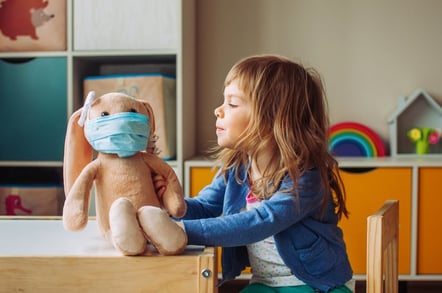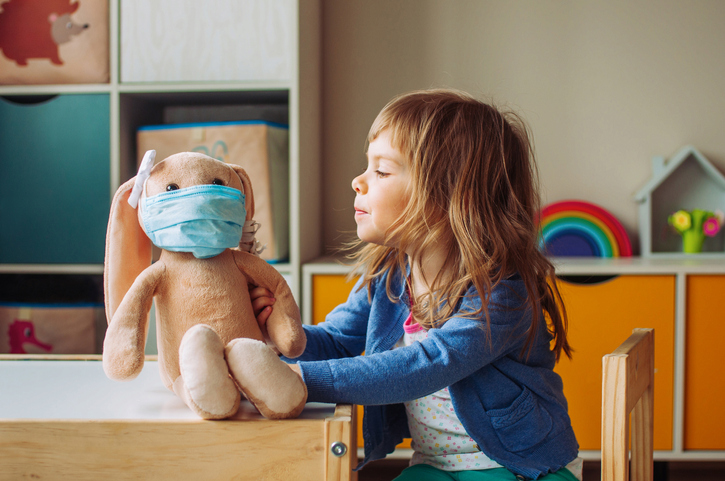Eight Tips and Resources for Explaining COVID-19 to Autistic Children
COVID-19 took the world by surprise leaving us all to adjust quickly and renavigate home, school, and work life. A top question on many families’ minds is how to explain the virus to our autistic children. The uncertainty of new situations can be stressful for anyone, especially when we are still discovering the facts. Incorporated here are helpful tips and resources to discuss the pandemic with your autistic children to help them best understand, cope, and thrive during this time.
1. Assess your child’s knowledge.
Experts recommend not overwhelming your child with unnecessary information. Identify first what your children already know about the pandemic and the anxieties they have. Working with your autistic child to express his or her concerns through drawing or journaling can also help uncover this information.
2. Address your child’s questions honestly and provide facts.
Autistic children are sensitive to their surroundings and often very aware of environmental changes. Providing a basic context on why something is happening can help them cope better.

When discussing the pandemic, it’s important to remember that many autistic children have added anxiety, which can make explaining a virus, germs, and a global pandemic a challenging task. Using social stories and simple visuals can provide factual information in a more digestible form. This social story from The Autism Educator explains what Coronavirus is, while these from the Autism Society on wearing a mask and social distancing can prepare your child at home and for when they have to venture outside. You might try talking with your child about what it means to be sick, and times when he or she was sick and recovered.
Some helpful resources for explaining COVID-19 include:
- CDC resource on Talking with Children about Coronavirus Disease
- Wash Your Hands with Peppa Pig video from the World Health Organization.
- COVID-19 Toolkit and social stories from the Autism Society
For more comprehensive visual overviews explaining the virus:
- Coronavirus video by BrainPOP
- Children’s book from the World Health Organization
3. Speak to your child’s developmental stage and learning style.
You know your child best. If a verbal explanation is useful, then discussing the topic or reading a kid-friendly article together can help. Other autistic children who are more visual learners may prefer a video, comic, social story, or hand-drawn picture to explain the virus and the steps for staying healthy.
 If your child is showing more curiosity than fear regarding germs, acting out a scene using household items or puppets can also get the point across, in a fun and relaxed manner: The germs can be a crown-shaped dog toy or ball, and the soap can come to the rescue by tackling the germs, while the face mask repels germs like a shield of steel. Who said masks can’t be superheroes? Introducing props that kids can hold and feel can provide a tactile component to learning.
If your child is showing more curiosity than fear regarding germs, acting out a scene using household items or puppets can also get the point across, in a fun and relaxed manner: The germs can be a crown-shaped dog toy or ball, and the soap can come to the rescue by tackling the germs, while the face mask repels germs like a shield of steel. Who said masks can’t be superheroes? Introducing props that kids can hold and feel can provide a tactile component to learning.
4. Keep a routine. Talk about it with your child.
Raise your cleaning wipe if you’re going batty with a lack of a normal routine! Routines are very important for kids and adults. For autistic children, routines are of the utmost importance, as they clarify expectations for the day and provide consistency important for a sense of safety and normalcy. Outlining a daily routine with your child can help him or her navigate the new changes and keep anxiety at bay.
Create a visual schedule that includes your child’s daily activities. Time for reading, school work, playing outside, snack breaks, household chores, and waking and bedtime, are some examples. Make sure to include times for relaxation like meditation, breathing exercises, or winding down before bed. Talk with your children about this schedule, and where appropriate, check in with them at the start of each day or prior evening to review it. Slowly integrate any new changes and explain them ahead of time. This Autism Society webpage provides a social story and tools for COVID-19-related routines.
5. Find creative ways to play and explore.
Play and exploration are not only excellent distractors during this time, but are important for growth and learning. Listed are a few creative ways to help your children stay active.
- A scavenger hunt outdoors journaling or drawing about what they see.
- Physical activity:
- Yoga
- A dance party with your child’s favorite music pick
- Games that allow for movement like Simon Says
- Exercise of any sort is very important!
- Create activity stations in your child’s room or other places in your home. Stations may include art, science, reading, math, and exercise. These stations may help your child’s transition during the routine, and provide an enjoyable way to break up the day. Check in with your child to make sure this new change is welcomed.
- Designating a special reading corner or “imagination land” where your child can venture under a tent (assuming it’s not too confining) or across a pillow divide to read, draw, or listen to music.

6. Talk with your child about feeling overwhelmed.
The pandemic can be a scary and uncertain time for everyone, especially children. This may be magnified for autistic children who already struggle with anxiety. Your child may be feeling anxious about the unknown duration of the pandemic, the disruption in routine, and missing school, friends, and favorite foods and events. Talk with your children about their feelings and reassure them it’s okay to feel a variety of emotions.
To assuage anxiety make a list with your children of anything scaring them, then a list of items that bring your children comfort, like family and friends. During the process remind your child that the items that bring him or her comfort will still be present.
This blog on Autism and Anxiety: 10 Strategies to Help Your Child, provides relevant tips.
7. Remind children of the positives.
While COVID-19 brings about uncertainty, there are many benefits. Discuss these together with your child. These may include having more time with family or a pet, opportunities to talk with friends and family across the world, time to explore and work on new projects, quiet time for yoga and breathing, and opportunities to learn from fun distractions like cooking, movies, and puzzles.
8. Take one step at a time.
Parents and caregivers, this also applies to you! Remind yourselves and your children, that it’s okay to have an off day. We can each take one step at a time to help navigate this challenging period.
Arielle Doochin
Arielle is a senior learning experience designer and writer who has created online, print, and blended educational materials for a diverse range of learners. Her academic background in the principles of education, neuroscience, and psychology informs her work in enhancing comprehension and promoting a sense of exploration in the design and facilitation of educational products.




